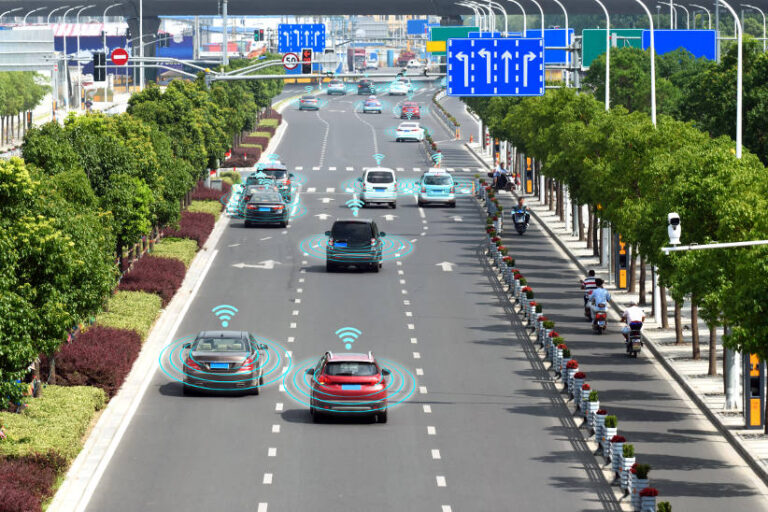– By Rob Finney, General Manager, Intelematics –
The automotive landscape in Australia is witnessing a significant evolution, driven by the convergence of connectivity and AI technologies. These advancements are altering vehicle design and the software and systems that power them. This transformation presents new opportunities for enhancing road safety, elevating the driver experience, and improving road infrastructure. As we head into 2024, we can expect to see a significant shift in how connectivity is used by fleets, governments and consumers.
Increasingly Connected Cars
The integration of 5G networks marks an era where vehicles are more interconnected. This is laying the foundation for accelerated data transfer and real-time communication between vehicles. Vehicle-to-Everything (v2X) technology is at the forefront of this evolution. By 2035, 100 per cent of vehicles are forecast to be connected with over 30 per cent v2x enabled. This transition will happen fastest in the fleet space where there is high vehicle turnover every 2-3 years.
Key opportunities will include Vehicle-to-Infrastructure communication. In Australia, an area being explored is the ability of vehicles to communicate with traffic lights and intersections – with a view to improving road safety and traffic flow. In 2024, Intelematics will exploit its unique access to live SCATS data and partnership with Traffic Technology Services (TTS) to open up opportunities in this space. We expect Australia will be the first region in the Asia-Pacific to trial TTS’ PSA (traffic light data) and PFA (freeway data) solutions.
Advancements in Intelligent Cars
AI’s impact on the automotive industry is projected to grow by nearly 40 per cent annually reaching a valuation of $15.9 billion by 2027. Beyond the futuristic concept of self-driving cars, AI is poised to offer immediate and practical benefits.
We can expect AI to be used to monitor vehicle performance and the lifecycle of critical parts and components, like batteries and tyres, more closely. It may also be used to monitor driver behaviour and predict potential issues using historical data. The insurance industry is exploring this approach to calculate risk and cost. In Australia, the focus will be on areas such as predictive maintenance, where innovations like Intelematics’ FailSafe technology will play a pivotal role – especially for fleets. FailSafe uses AI to predict battery failure and prevent breakdowns. In 2024, we expect to see predictive technologies grow in presence.
Emphasis on Road Safety
2023 was the deadliest in five and a half years with Australia’s road toll reaching 1,253. This has made road safety a top priority for state governments. The integration of AI-driven systems for autonomous driving, collision avoidance, and pedestrian detection will continue to play a critical role. Additionally, we can expect systems designed to enhance emergency response times to be further adopted.
On Australia’s remote and rural roads, where passing traffic may be sparce and there is little roadside infrastructure, technologies like ASURE eCall will play an ever more important role. Because it captures data automatically from the vehicle, eCall is able to reduce the response time of emergency services. Within five seconds or less, agents can be speaking with the vehicle occupant and have all available event information on hand to promptly engage emergency services as needed.
Addressing Regulatory Concerns
As vehicles become more connected, concerns about data privacy and security are mounting. In 2024 and beyond, robust security measures will be necessary to safeguard increasing amounts of vehicle data. The Australian government is working towards standards to ensure data privacy and security in connected vehicles.
To date, OEMs have struggled to obtain consents to share and monetise the vast amount of data that connected vehicles generate. The industry is looking to innovative organisations to manage these consents and create deep vertical experiences that deliver compelling customer value. We can expect to see an increased appetite for more open data sharing to help inform policy, road safety and driver experience from all sides of government and industry.
Electrification
It is forecast that over 30 per cent of passenger vehicles globally will be EVs by 2030. In 2024, we can expect EV adoption in Australia to grow. According to Future Forecast Report 2024, one third of all Australians plan to buy an electric vehicle (EV) within the next 5 years. The majority of these vehicles will be charged at home.
In line with this growth, there will be an increased demand for vehicle data to support future high-value Vehicle-to-Grid markets. EVs will help support the energy grid with additional storage and supply options with consents potentially managed by way of private citizen participation in virtual power plants. There is a long way to go before V2G is as normal as plugging in your phone to charge, but Australia is steadily moving in this direction.
Creating a safer more efficient future
The intersection of connectivity and AI technologies will continue to reshape the automotive landscape in Australia. These emerging trends not only promise innovation but also underline the importance of collaboration between government bodies, industry players, and technology innovators. 2024 will mark the start of an important journey, which will see us have access to more vehicle and road data that ever before. This makes harnessing it as important as protecting it, to ensure a safer, more connected, and efficient automotive future for Australia.






